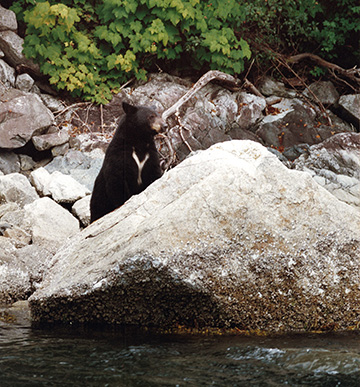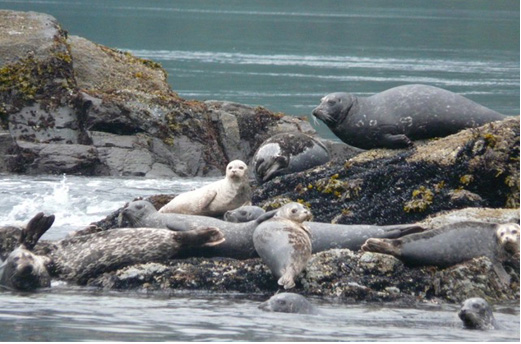
Eco-Adventures
Stuart Island and Bute Inlet offer spectacular nature viewing in a remote setting. Ideal sea conditions, steep shorelines and unique cross migrations allow comfortable, close-up views of both marine and terrestrial animals with the natural beauty of the land and seascapes.
Bald Eagle Migration
 Every spring, a confluence of migrations specific to the Stuart Island area creates an extraordinary, natural phenomenon. Pacific Hake gather in huge numbers in the deep channels surrounding Stuart Island during their spawning migration. These weak-swimming bottom fish get swept from the depths by strong tidal currents and lay, stunned, on the surface of the water.
Every spring, a confluence of migrations specific to the Stuart Island area creates an extraordinary, natural phenomenon. Pacific Hake gather in huge numbers in the deep channels surrounding Stuart Island during their spawning migration. These weak-swimming bottom fish get swept from the depths by strong tidal currents and lay, stunned, on the surface of the water.
Bald Eagles migrate by the hundreds to Stuart Island to take advantage of this Hake migration. For nearly ten weeks, they gather in the trees on the shoreline at strategic locations during the tide cycles. Soon, the powerful tidal surges bring the Hake to the surface and the skies, literally, fill with adult and juvenile Bald Eagles as they swoop down to snatch up their immobilized prey.
This seasonal, cross migration of Bald Eagles and Pacific Hake is unique to the Stuart Island area.
Pacific White-Sided Dolphin
Well-known for their aerial acrobatics and highly social nature, they are easy to approach and often eager to swim in the wake of the boat.
Orca
In the Stuart Island area, we see two different populations of Orca (Killer Whale). In an overlap of their large, sprawling territories, both the Southern Resident Killer Whale (SRKW) and the northern Biggs (Transient) Killer Whales regularly patrol these waters in search of their respective prey. Reaching lengths of 30 feet, these majestic marine mammals are true icons of the BC coast.
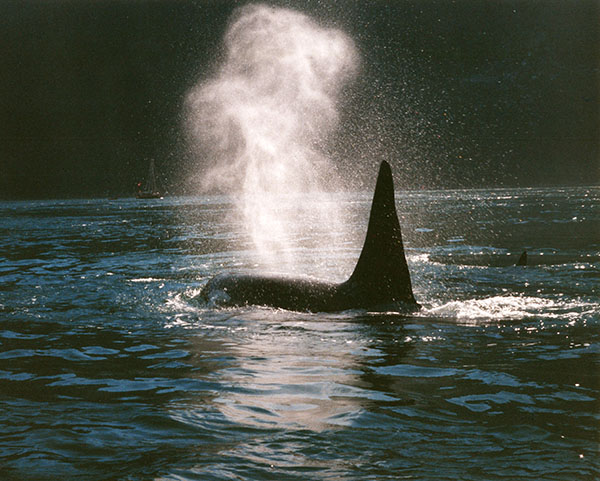
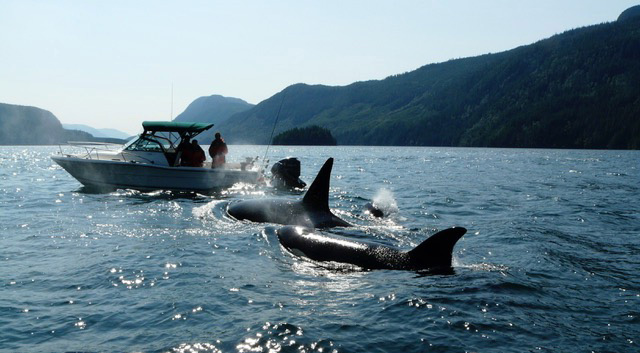

Black Bear
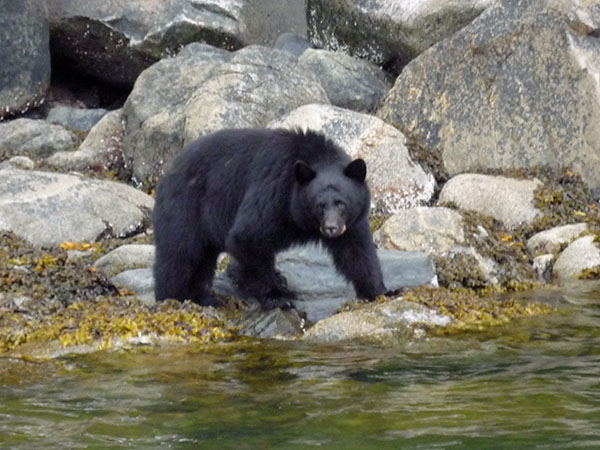 Hungry from their winter hibernation, Black Bear are prolific along the shores of the mainland inlets during the spring and early summer. They are often seen foraging on the barnacles, mussels and seaweed at the low tide line.
Hungry from their winter hibernation, Black Bear are prolific along the shores of the mainland inlets during the spring and early summer. They are often seen foraging on the barnacles, mussels and seaweed at the low tide line.
Steep shorelines, where the water is very deep close to shore, allow opportunity for an extremely close-up view from a boat if you approach them down-wind, slowly and quietly.
Tidal Rapids
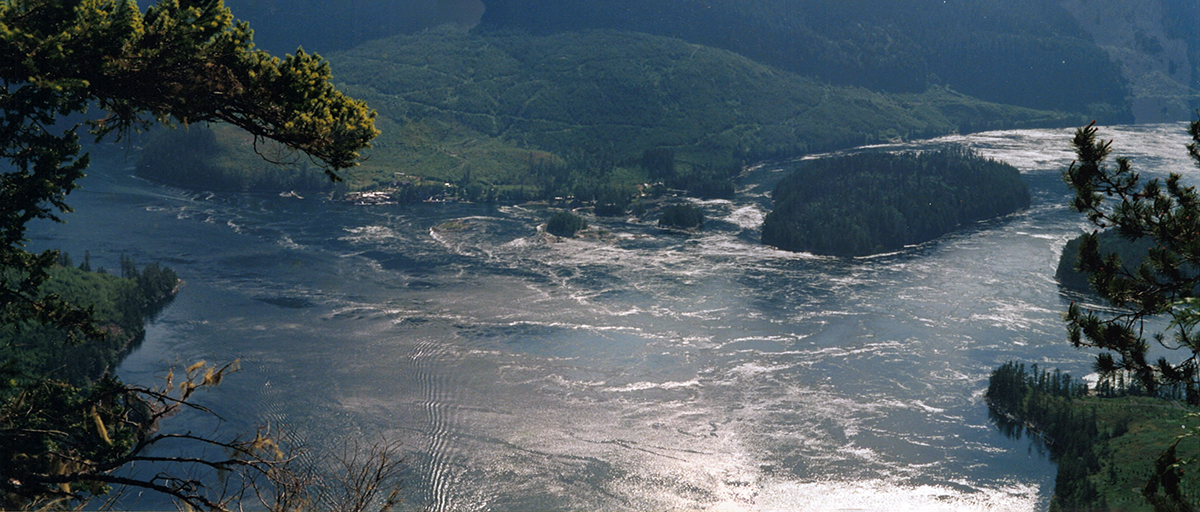
In addition to the abundant wildife viewing, experiencing the extreme tidal movement of the Arran Rapids, Yuculta Rapids or Dent Rapids by boat is both exhilarating and daunting. Huge whirlpools, erupting boils and tidal surges that whip the water into a white, frothing frenzy. It’s like a class 5 river on the ocean!
Stuart Island is flanked on 3 sides by tidal rapids: the Arran Rapids to the north, the Yuculta Rapids to the west and the Dent Rapids (Devil’s Hole) to the northwest.
Arran Rapids is a narrow, 370m meter wide pass between the northwest tip of Stuart Island and the mainland shore at the entrance to Bute Inlet. It is one of the fastest, most turbulent tidal rapids on the BC coast.
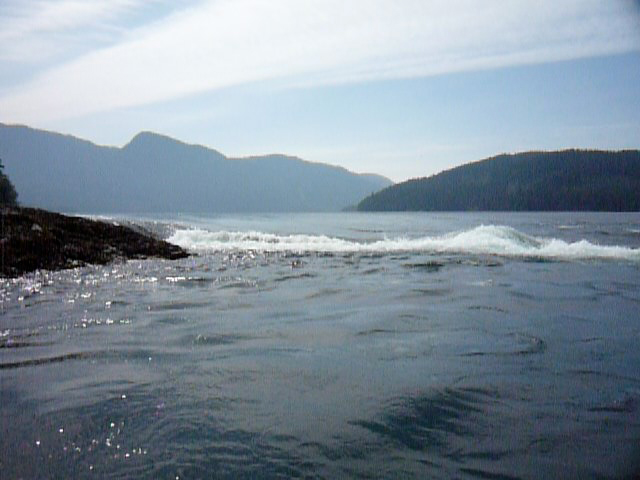
It’s the moon’s gravity that “pulls” the water thru the narrow passages, causing the inlets and channels to “fill” (a flood tide) and “drain” (an ebb tide) on predictable 6 hour cycles.
As the water courses thru the restricted pass, it dramatically increases in velocity to compensate for the reduced volumes. This volume-velocity phenomenon is so extreme it creates an “overfall”. So much water is trying to flow thru the narrow pass it appears to run “downhill” producing a dramatic water height difference of up to 6 feet. At the confluence of the overfall and the back eddy, two opposing currents create a stationary or "standing wave" that is the envy of surfers and white water kayakers.
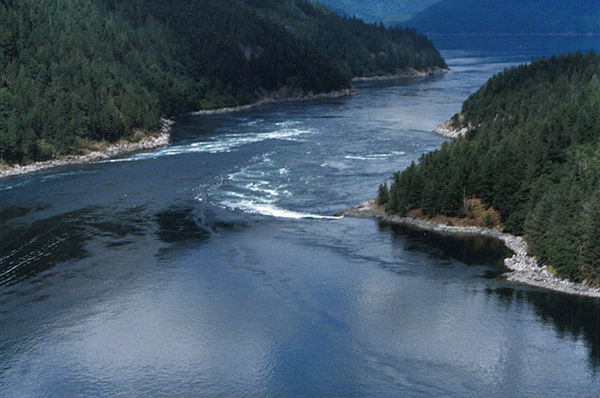
Concurrently, as the fast-moving water flows over the erratic bottom geography in the passage, it creates immense turbulence and forms a “back-eddy”; water that circles around and moves in the opposite direction of the main flow.
At the very edge, where the back-eddy and the main flow meet, called the “ripline”, it’s virtual chaos! Sucking whirlpools, erupting boils and tidal surges whip the water into a white, frothing frenzy.
Reaching speeds over 13 knots, these rapids produce enormous whirlpools, at times, 25 feet in diameter and almost 10 feet deep.
Huge logs can be turned on end and sucked down until they disappear, only to be catapulted back to the surface further downstream as its buoyancy overcomes the whirlpool’s power. Surface boils, nearly 6 feet in height, can erupt out of nowhere and overturn a boat in an instant.
Considered an extreme navigational hazard these passages are cautiously avoided during peak flow periods and only transited during the calm, slack periods of the tide.

